Physical Address
30 N Gould St Ste N Sheridan, WY 82801
Physical Address
30 N Gould St Ste N Sheridan, WY 82801
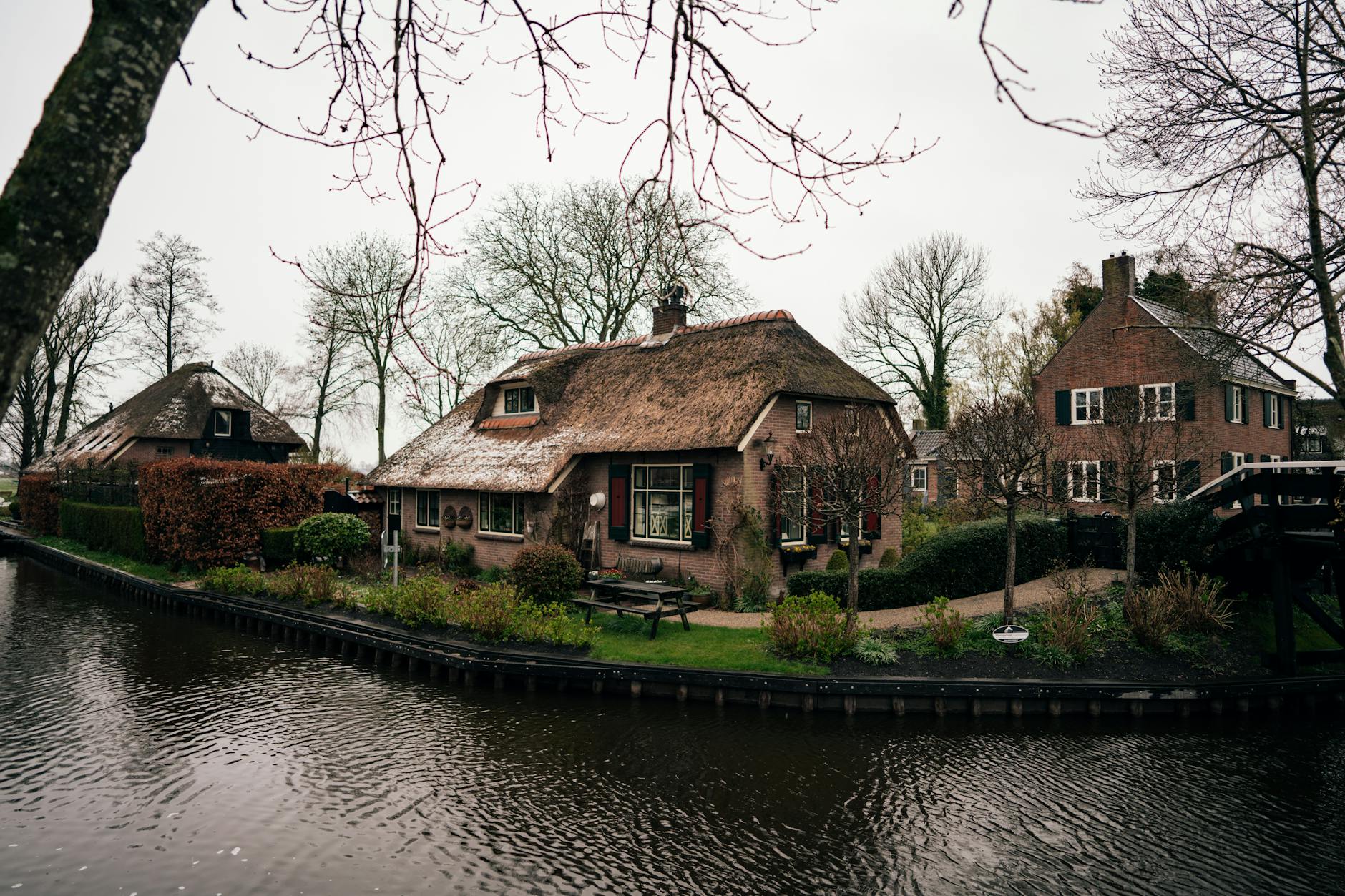

Giethoorn, the ‘Venice of the North’, beckons travelers with its storybook charm—a magical Dutch village where the gentle splash of oars replaces the roar of engines, and centuries-old thatched-roof farmhouses reflect like watercolor paintings in mirror-still canals. Imagine gliding silently through narrow waterways aboard a traditional whisper boat, discovering a car-free paradise where time seems suspended and every corner reveals another postcard-perfect scene. This isn’t just another European destination; it’s your gateway to experiencing authentic Dutch countryside bliss, where reed-lined channels wind past flower-laden gardens and the only sounds are birdsong and the soft lapping of water against wooden bridges. Whether you’re seeking a romantic escape, a photographer’s dream, or simply a peaceful retreat from the modern world, this hidden gem in Overijssel province offers an unforgettable journey into Netherlands’ most enchanting village life.
Picture this: thatched-roof cottages reflected in mirror-like canals, wooden footbridges arching gracefully over waterways, and the gentle sound of water lapping against small boats. No traffic noise. No exhaust fumes. Just pure, undisturbed charm.
Over 90,000 visitors flock to Giethoorn yearly, yet somehow the village maintains its intimate feel. The secret? Nearly everything must be accessed by boat or on foot, preserving the peaceful atmosphere that’s made it famous.
There’s just something about Giethoorn that travel photos don’t capture—something you can only understand when you’re actually there…
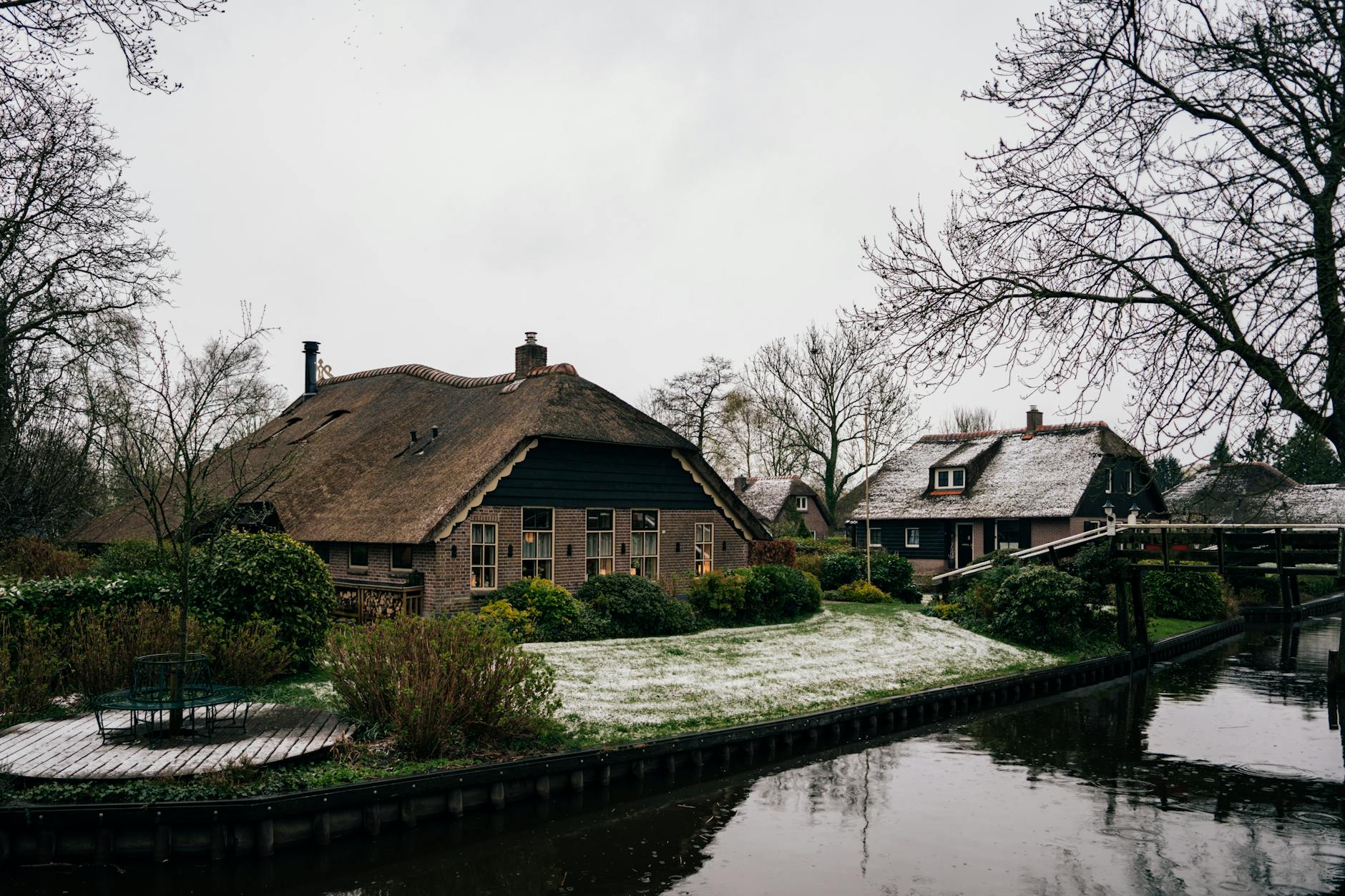
Ever wondered what life would be like without cars honking or the rumble of traffic? Giethoorn gives you exactly that peaceful escape. This dreamy Dutch village has no roads – just canals, footpaths, and over 180 bridges connecting everything.
Getting around? You’ve got two options: by boat or on foot. Most locals own a “whisper boat” – traditional punters or modern electric boats that glide silently through the canals. As a visitor, you can rent one yourself (no license needed!) or hop on a guided tour boat.
The narrow footpaths wind between thatched-roof farmhouses and immaculate gardens, perfect for leisurely strolls. Many homes are only accessible this way, with residents bringing in groceries and supplies by boat.
Giethoorn wasn’t built to be Instagram-famous. Back in the 13th century, it was founded by a group of fugitives (mostly peat harvesters) who created these waterways while digging for peat. The resulting lakes and canals shaped the unique layout we see today.
For centuries, Giethoorn remained a quiet farming community, relatively unknown to outsiders. Everything changed in 1958 when Dutch filmmaker Bert Haanstra shot his comedy “Fanfare” here. The film showcased Giethoorn’s picturesque setting to the world, and tourists began trickling in.
Today, this once-hidden gem welcomes over a million visitors annually. Local families who’ve lived here for generations now run boat rental businesses, cafes, and B&Bs.
The comparison to Venice is spot-on. Both places have waterways instead of streets as their main transportation routes. Both feature charming bridges arching over canals. Both offer that magical experience of seeing homes and buildings seemingly float on water.
But Giethoorn has its own distinct character. While Venice dazzles with grand palazzos and Byzantine architecture, Giethoorn charms with rustic farmhouses and lush gardens. Venice bustles with crowds; Giethoorn (usually) maintains a more laid-back vibe.
What truly makes it the “Venice of the North” is how water isn’t just a feature but the very foundation of daily life. The nickname stuck because it perfectly captures the essence of this water-bound village.
Each season transforms Giethoorn completely.
Spring brings vibrant tulips and daffodils blooming in gardens along the canals. The weather turns mild, trees burst with fresh green leaves, and birds return to nest. It’s magical but can be busy during Easter holidays.
Summer offers the classic Giethoorn experience – warm days perfect for boating, outdoor dining, and swimming in nearby lakes. July and August bring peak crowds, especially on weekends.
Fall paints the village in golden hues. The summer crowds thin out, prices drop, and you can enjoy the changing foliage reflecting in the still waters.
Winter sometimes freezes the canals solid, transforming boat routes into ice skating paths. When snow dusts the thatched roofs, Giethoorn becomes a fairy-tale winter wonderland. Many restaurants stay open, serving Dutch winter specialties by crackling fires.
For the perfect balance of good weather and fewer crowds, aim for May, June, or September.
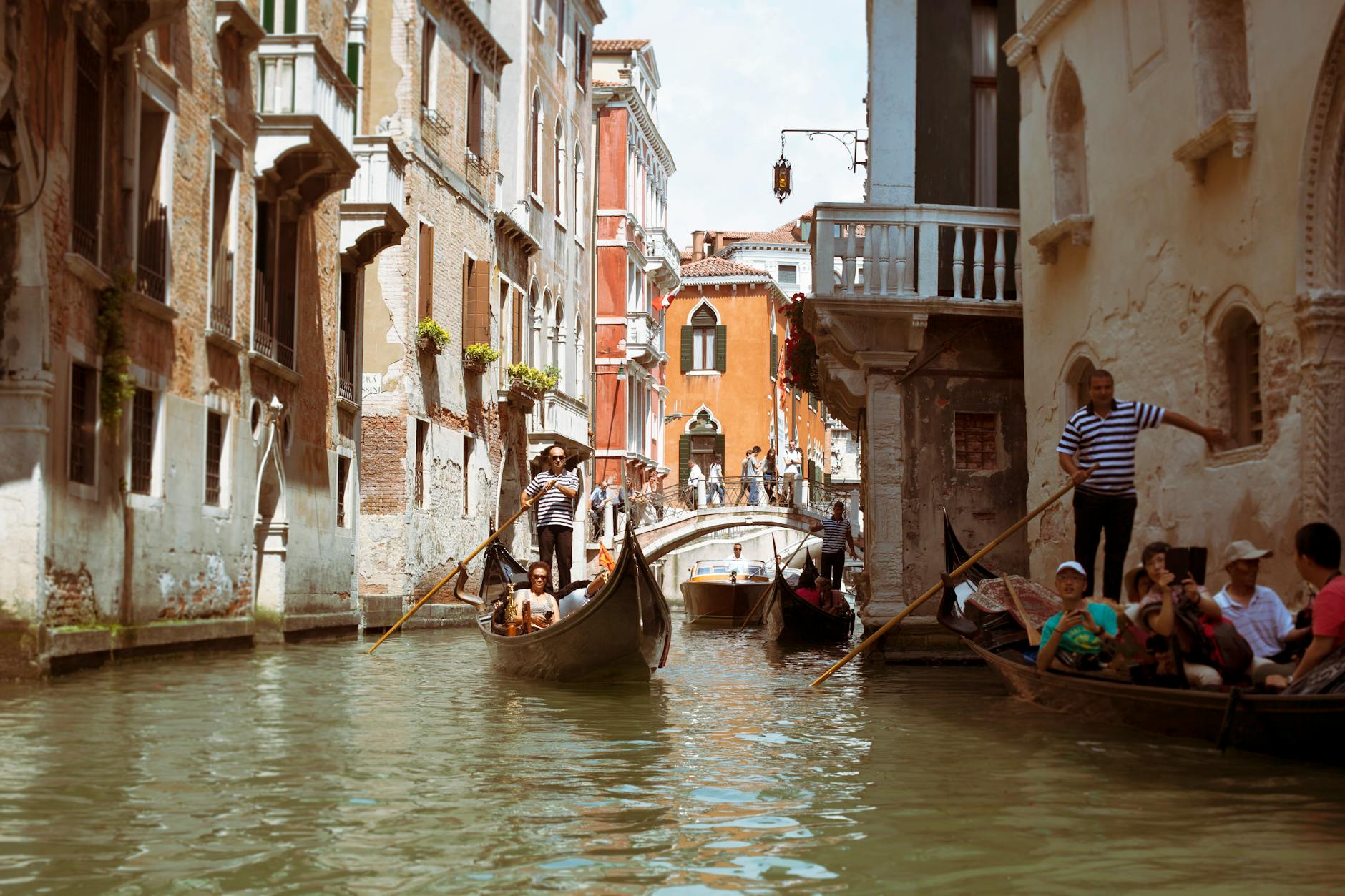
Ever wonder what makes Giethoorn instantly recognizable? It’s those charming thatched-roof cottages that look straight out of a fairytale. These aren’t just pretty faces – each house tells a story of ingenious adaptation to wetland living.
The cottages date back to the 18th century when peat farmers built them on small islands connected by wooden bridges. The thick reed roofs aren’t just for looks – they provide natural insulation against the harsh Dutch winters and cool summers.
Walk through the village and you’ll notice how no two cottages are exactly alike. Some lean slightly with age, others sport decorative shutters in traditional Dutch blue. Many homes proudly display family crests or small wooden ornaments that hint at the original owner’s profession.
The locals call these homes “punterwoningen” because they were designed with storage space for the traditional “punter” boats. Keep an eye out for the oldest cottage in the village – it’s been standing since 1710 and still has its original foundations!
Step into Museum ‘t Olde Maat Uus and you’re instantly transported back to Giethoorn’s humble beginnings. This isn’t your stuffy, hands-off museum – it’s a living snapshot of daily life from centuries past.
The museum occupies an authentic farmhouse where you can wander through perfectly preserved rooms showing how families lived in the 19th and early 20th centuries. The kitchen with its open hearth looks ready for someone to walk in and start cooking.
What makes this place special is how it captures Giethoorn’s unique relationship with water. Check out the tools used for peat cutting – the industry that literally shaped this landscape by creating the lakes and canals you see today.
Don’t rush through the exhibits on traditional costumes and crafts. The intricate lace caps worn by women and the handmade wooden punter boats showcase skills passed down through generations.
The friendly volunteers (often local residents) share stories you won’t find in guidebooks. Ask them about “whisper boats” or how mail was delivered by boat until surprisingly recently!
Hidden among Giethoorn’s watery wonders sits a treasure trove most visitors miss – De Oude Aarde (“The Old Earth”) museum. While everyone else is focused on canals, you can be marveling at one of Europe’s most impressive gemstone collections.
This place began as one man’s obsession. René Boissevain traveled the world collecting geological wonders and decided this peaceful village was the perfect spot to share them. The contrast works perfectly – natural beauty outside, natural treasures inside.
The star attractions are the massive amethyst geodes that tower over visitors. Some are cut open to reveal their crystalline interiors that sparkle under perfectly positioned lighting. The giant Brazilian crystals are particularly jaw-dropping.
Beyond just pretty rocks, the museum explains each specimen’s formation and historical significance. Did you know some of these minerals are older than our planet’s oceans?
Kids especially love the fluorescent mineral room where ordinary-looking stones transform into glowing masterpieces under ultraviolet light. It’s like a natural light show that reveals hidden colors invisible to the naked eye.
Giethoorn’s canals aren’t just transportation routes – they’re the village’s lifeblood and your pathway to the most Instagram-worthy photos you’ll take in the Netherlands.
The Dorpsgracht (village canal) offers the classic Giethoorn shot – curved waterways lined with cottages and willows, their branches dipping toward the water. Visit early morning when mist hovers over the surface and you’ll understand why photographers flock here.
The village boasts over 180 bridges, each with its own character. The high wooden footbridges were designed to allow boats to pass underneath. For the perfect photo, position yourself in the middle of one looking down the canal – you’ll capture multiple bridges creating a rhythm that leads the eye through the frame.
Binnenpad area features some of the oldest and most picturesque wooden bridges. Their weathered planks and simple designs contrast beautifully with the meticulously maintained cottages.
For something different, head to the southern canals where the waterways widen into lakes. Here, the traditional punter boats silhouetted against the setting sun create photos that capture the essence of this remarkable village.
Giethoorn sits right at the edge of the Netherlands’ largest wetland preservation area – Weerribben-Wieden National Park. This massive peatland ecosystem is the wild heart that complements Giethoorn’s cultivated charm.
The park spans over 10,000 hectares of reed beds, open water, and marshy forests. Unlike Giethoorn’s manicured canals, these waterways follow natural paths through dense vegetation where otters have made a remarkable comeback after nearly disappearing.
Rent a canoe or kayak to explore the quieter corners where motorboats can’t go. The silence is broken only by rustling reeds and the calls of marsh harriers circling overhead. If you’re lucky, you might spot a kingfisher – a flash of electric blue diving for fish.
Hiking trails wind through varied landscapes, but the floating boardwalks are the real highlight. These narrow paths cut through reed beds taller than your head, creating the sensation of walking on water.
The visitor center at Ossenzijl offers excellent maps and guides. Their staff can point you to seasonal highlights like the purple loosestrife blooms that transform marshes into vibrant carpets each summer or the best spots for birdwatching in spring when thousands of migrants pass through.
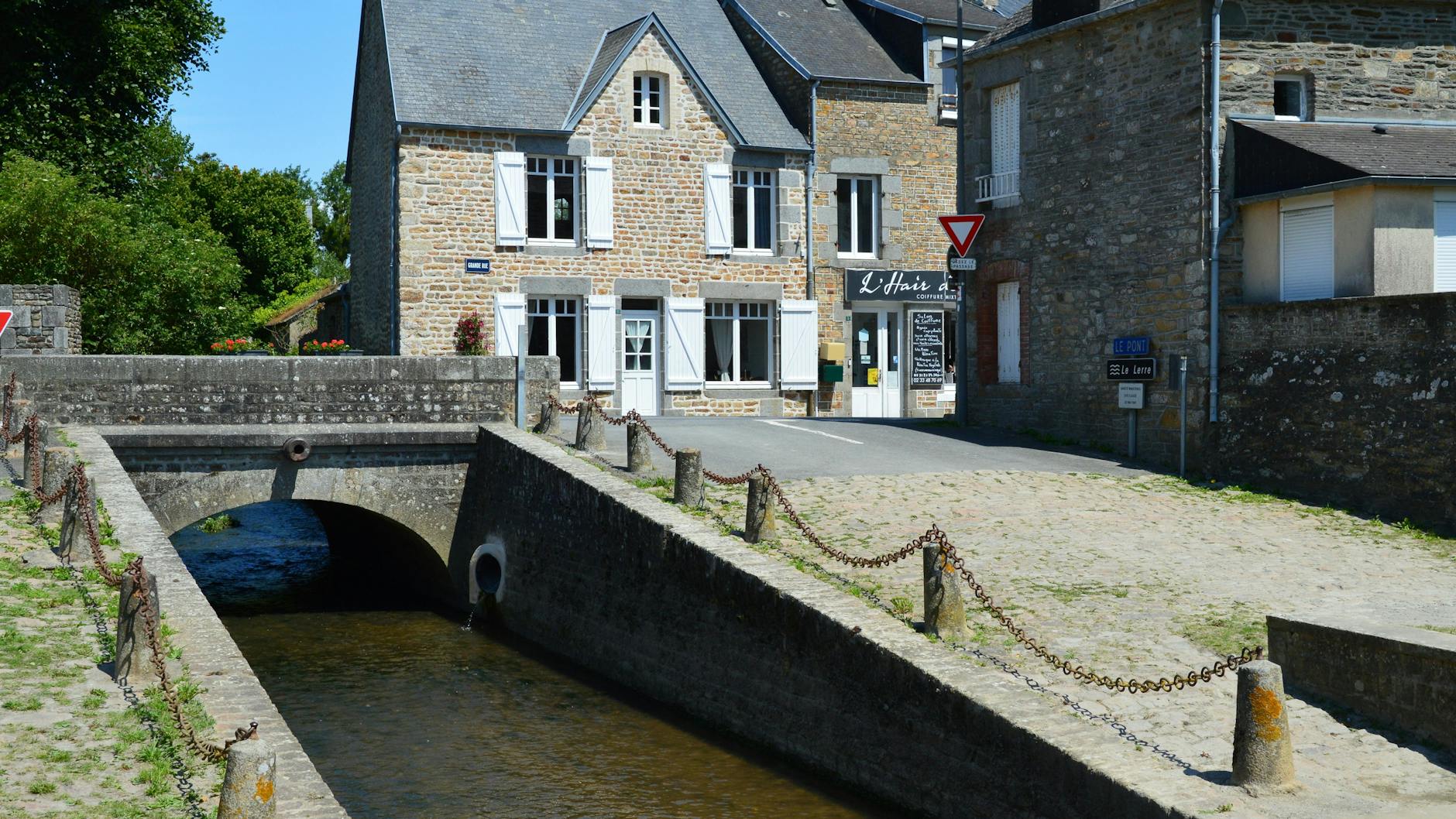
Want to experience Giethoorn like the locals do? Forget those packed tourist boats.
The big decision you’ll face is whether to join a traditional boat tour or rent your own “whisper boat” (so named because of their silent electric motors). Here’s the real deal:
Traditional tours give you a guide who knows all the stories and history. You’ll learn why houses were built on little islands and hear legends about how locals used to transport everything by boat. Plus, you don’t have to worry about navigation.
But renting your own whisper boat? That’s freedom. You can stop whenever you spot a perfect photo op, linger at a charming café, or just float peacefully under a willow tree.
| Tour Type | Pros | Cons |
|-----------|------|------|
| Guided Tour | Expert commentary, No navigation stress, Fixed price | Set schedule, Crowded boats, Tourist-focused |
| Whisper Boat | Go at your own pace, Reach hidden canals, More authentic | Navigation challenges, Time management, Slightly pricier |
Locals will tell you the best times are early morning or late afternoon when the tour buses have left. If you’re comfortable steering, the self-guided option gives you the authentic experience. Just grab a simple canal map from any rental place and push off into the waterways just like residents have done for centuries.
The secret to experiencing the real Giethoorn? Just paddle a few canals beyond the main drag.
Most visitors never venture past the central village area, but locals know the true magic happens in the northern and southern canal networks. Head to Dwarsgracht, a mini-version of Giethoorn without the crowds. The narrow waterways here are lined with traditional farms and the occasional honor-system farm stand selling fresh eggs or flowers.
Another local favorite is the peaceful Weerribben-Wieden National Park that borders the village. Rent a canoe instead of a motor boat to access the shallow reed-lined waterways where you might spot otters or rare marsh birds.
For a truly hidden gem, seek out the historic Eendenkooi – traditional duck decoys used for centuries. These managed ponds with elaborate netting systems show how villagers historically caught wild ducks. Most tourists have no idea they exist!
The Museum ‘t Olde Maat Uus gets overlooked too, but locals love taking visitors there to show how people lived when Giethoorn was a peat-mining community. Go late afternoon when the tour groups have already left.
Skip the tourist trap eateries with their laminated English menus. The real Dutch food experience in Giethoorn happens at the places where locals actually eat.
Start your day with a proper Dutch breakfast at De Grachthof – think rustic bread, aged cheese, and strong coffee. Their pannenkoeken (Dutch pancakes) come topped with bacon and syrup in that sweet-savory combo the Dutch have perfected.
For lunch, nothing beats bitterballen – deep-fried beef ragout balls that pair perfectly with local beer. Restaurant Fratelli serves them with homemade mustard that’ll knock your socks off.
When dinner rolls around, look for restaurants serving stamppot – a hearty mash of potatoes and vegetables topped with smoked sausage. It’s comfort food that got villagers through centuries of cold winters. At De Rietstulp, they make theirs with seasonal vegetables from nearby farms.
Don’t leave without trying poffertjes (mini pancakes dusted with powdered sugar) at one of the small cafés along the quieter canals. Locals will tell you the best ones come from Smit’s Paviljoen, where they’re made to order on traditional cast iron pans.
Sweet tooth still not satisfied? Hunt down stroopwafels – two thin waffle cookies with caramel syrup in between. The proper way to eat them is atop your hot coffee, letting the steam soften the caramel.
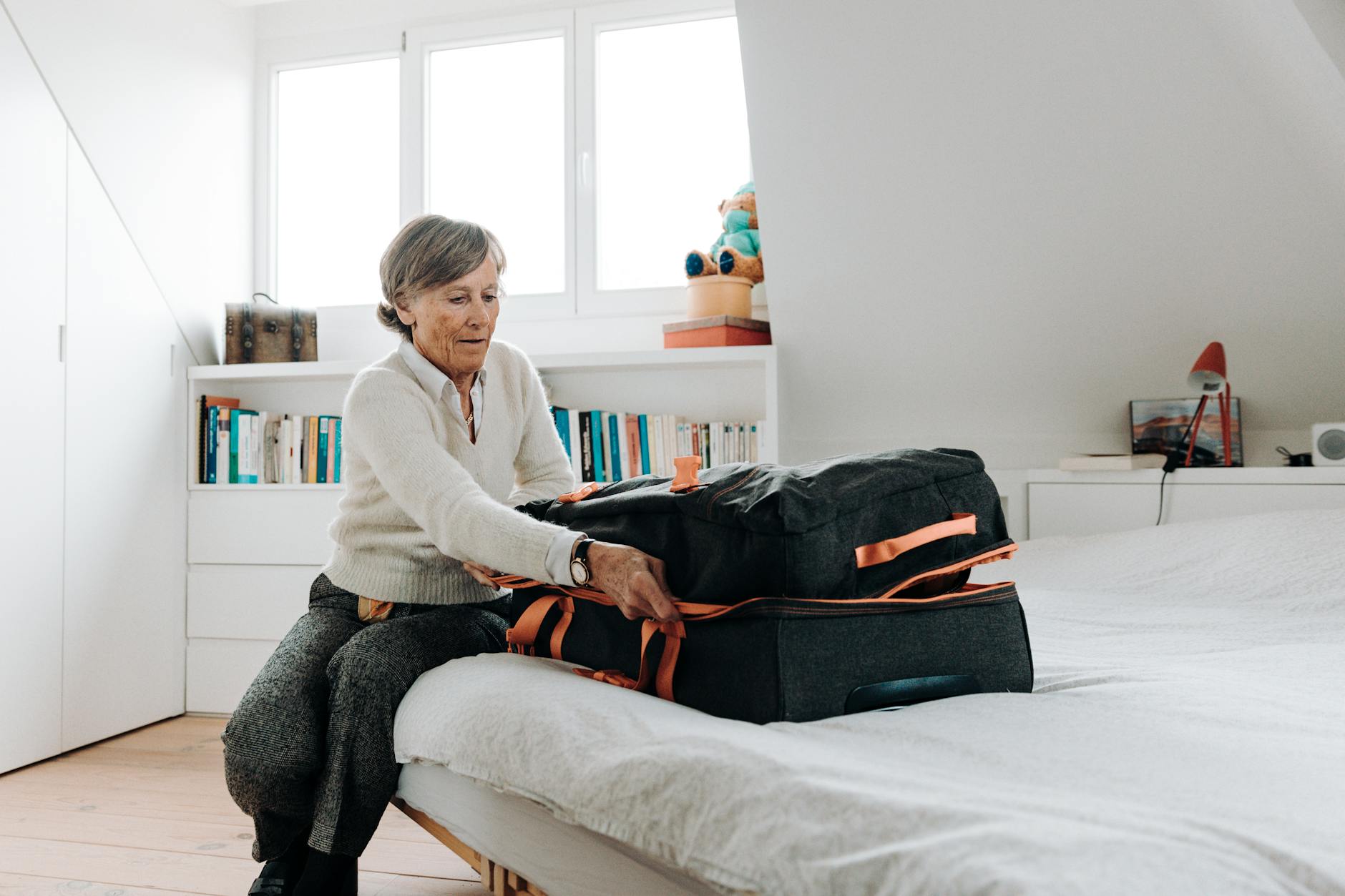
Getting to Giethoorn isn’t complicated, but it does require some planning. From Amsterdam, you’ve got a few solid options:
By public transport, catch a train to Steenwijk (about 2 hours), then hop on bus 70 for the final stretch. The whole journey costs around €25-30 round trip with an OV-chipkaart.
Driving? It’s about a 90-minute trip from Amsterdam. Just remember – once you reach Giethoorn, you’ll need to park at designated lots since the village itself is car-free.
For the easiest option, organized day tours from Amsterdam run daily (€75-100) and handle all the logistics for you.
Coming from elsewhere? Rotterdam and Utrecht are both under 2 hours away by train+bus combination. From Germany, consider coming via Groningen if you’re in the north.
Nothing beats staying right on the canals in one of Giethoorn’s traditional thatched cottages. Places like Museumhaven Bed & Breakfast put you right in the heart of the village.
For something more modern, Hotel de Harmonie offers comfy rooms with canal views but with updated amenities.
On a budget? Look at nearby Steenwijk or Meppel for more affordable options – you’ll just need to factor in transportation to the village.
Visiting in summer? Book at least 3 months ahead – those canal-side spots get snatched up quickly, especially on weekends.
Giethoorn’s charm comes from its car-free setup. Here’s how to get around:
Rent a whisper boat (€15-20/hour) – the classic way to explore the canals at your own pace. No boating license needed for these small electric boats.
Walking is perfect for the main village area – just follow the footpaths alongside the canals.
Bikes work great for covering more ground (€10/day rental) with dedicated cycling paths connecting the wider area.
For guided experiences, 1-hour canal tours run frequently (€9-12) with commentary in multiple languages.
Pack comfortable shoes – the bridges are charming but some are quite steep!
Many visitors do Giethoorn as a day trip, but here’s why staying overnight makes sense:
The morning magic (before 11am) and evening calm (after 5pm) let you experience the village without tour groups. The canals lit up at dusk? Absolutely magical.
Day-trippers typically get 4-5 hours in the village – enough for a boat ride and quick lunch, but not much exploration beyond the central area.
If you’re staying overnight, you can venture to nearby attractions like De Weerribben-Wieden National Park or take longer boat routes to the lakes.
Summer day trips mean crowds – if that’s your only option, try a weekday visit instead of weekends.
The overnight premium is worth it – especially if you can swing a midweek visit when rates drop by 20-30%.
Venture beyond Giethoorn’s waterways and you’ll discover a cyclist’s paradise. The flat terrain is practically begging you to explore it on two wheels. Rent a bike in the village and follow the junction-point cycling network that weaves through meadows, forests, and alongside crystal-clear lakes.
The “Weerribben-Wieden Route” is a local favorite – a 35km trail that takes you through the largest bog area in northwestern Europe. You’ll pedal past reed fields, small farms, and the occasional windmill. It’s quintessentially Dutch and utterly magical.
For something shorter, try the 15km “Giethoorn-Belt Schutsloot” loop. This route connects Giethoorn with the equally charming (but way less crowded) hamlet of Belt-Schutsloot.
While everyone crowds into Giethoorn, smart travelers slip away to explore these hidden gems:
The area transforms with each season, offering different experiences throughout the year:
Winter brings the possibility of ice skating on frozen canals – a truly Dutch experience. The “Schaatstocht Giethoorn” (Giethoorn Skating Tour) is organized whenever the ice is thick enough.
Spring sees the Wieden-Weerribben National Park burst into life with wildflowers and nesting birds. Take a guided nature walk to spot rare birds and otters.
Summer hosts the “Giethoorn Music Festival” with performances on floating stages throughout the village.
Fall offers the “Mushroom Spotting Days” where expert guides help you identify edible varieties in the surrounding forests.
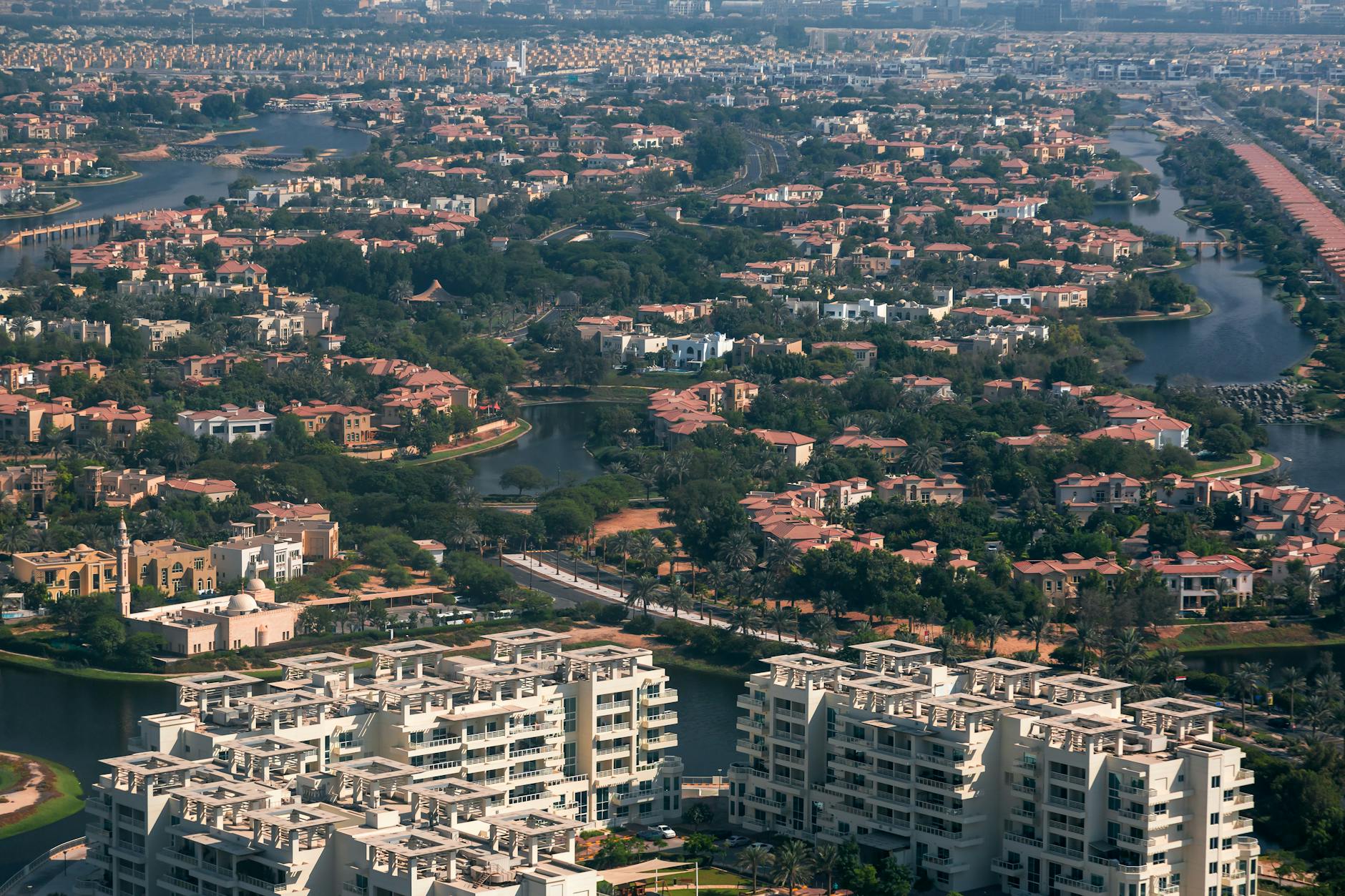
Giethoorn’s enchanting network of canals, charming thatched-roof cottages, and car-free village center offer visitors a truly unique Dutch experience. From punting along peaceful waterways to exploring must-see attractions like Museum Giethoorn and De Oude Aarde, this hidden gem provides an authentic glimpse into traditional Dutch life away from the urban bustle.
Plan your visit during shoulder seasons to avoid crowds, and don’t forget to venture beyond the village to discover the natural beauty of Weerribben-Wieden National Park. Whether you’re seeking a romantic getaway, a family adventure, or a peaceful retreat, Giethoorn promises an unforgettable experience that captures the essence of the Netherlands’ picturesque countryside.